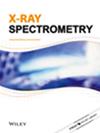用 X 射线荧光法研究煤和煤灰的化学成分:综述
IF 1.5
4区 物理与天体物理
Q3 SPECTROSCOPY
引用次数: 0
摘要
煤和煤灰的元素组成信息对于解决一些与技术工艺和环境污染控制有关的问题非常重要。众所周知,煤和煤灰样品中通常含有大量有价值和有毒的成分(如钒、铬、Со、镍、铜、锌、砷、锶、钡、铅、镓和锗),这些成分可通过 X 射线荧光 (XRF) 光谱法成功测定。本综述简要讨论了 XRF 设备的发展、通过 XRF 测定的相关元素以及常见的样品制备程序。介绍了一些元素分析线和散射辐射相对强度的计算方法,以说明 XRF 分析中可能存在的基体效应。详细介绍了全反射 XRF (TXRF) 的可能性和缺点,因为煤和灰分析是 TXRF 方法的一个相对较新的应用领域。综述还介绍了应用 XRF 方法分析选煤厂和热电厂废物的实例,以评估其前景并选择提取个别元素的方法。在审查的出版物中,有几部作品专门研究了煤炭、煤灰和煤炭废料中的元素分布,特别是稀土元素。本文章由计算机程序翻译,如有差异,请以英文原文为准。
Study of the chemical composition of coal and coal ash by X‐ray fluorescence method: A review
Information about the elemental compositions of coal and coal ash is very important to solve some issues related to both technological processes and the control of environmental pollution. It is known that the coal and coal ash samples often contain significant amounts of valuable as well as toxic components (e.g., V, Cr, Со, Ni, Cu, Zn, As, Sr, Ba, Pb, Ga, and Ge) that can be successfully determined by X‐ray fluorescence (XRF) spectrometry. This review briefly discusses the development of XRF equipment, elements of interest determined by XRF, and common sample preparation procedures. The calculation of relative intensities of analytical lines of some elements and scattered radiation is presented to demonstrate possible matrix effects in XRF analysis. Possibilities and drawbacks of total reflection XRF (TXRF) are described in detail as the coal and ash analysis is a relatively new area of application of TXRF method. The review also presents examples of the application of the XRF method for analysis of waste from coal preparation plants and thermal power plants to assess their prospects and to choose a method for extracting individual elements. Among the reviewed publications, several works are devoted to the study of the element distributions, especially rare earth elements, in coals, coal ash, and coal waste.
求助全文
通过发布文献求助,成功后即可免费获取论文全文。
去求助
来源期刊

X-Ray Spectrometry
物理-光谱学
CiteScore
3.10
自引率
8.30%
发文量
38
审稿时长
6-12 weeks
期刊介绍:
X-Ray Spectrometry is devoted to the rapid publication of papers dealing with the theory and application of x-ray spectrometry using electron, x-ray photon, proton, γ and γ-x sources.
Covering advances in techniques, methods and equipment, this established journal provides the ideal platform for the discussion of more sophisticated X-ray analytical methods.
Both wavelength and energy dispersion systems are covered together with a range of data handling methods, from the most simple to very sophisticated software programs. Papers dealing with the application of x-ray spectrometric methods for structural analysis are also featured as well as applications papers covering a wide range of areas such as environmental analysis and monitoring, art and archaelogical studies, mineralogy, forensics, geology, surface science and materials analysis, biomedical and pharmaceutical applications.
 求助内容:
求助内容: 应助结果提醒方式:
应助结果提醒方式:


